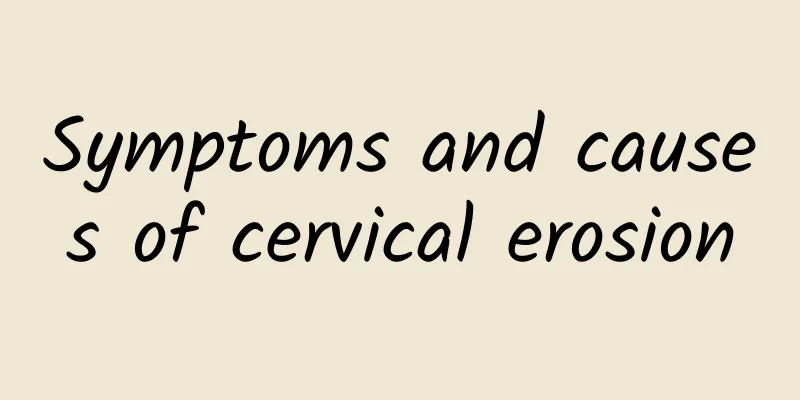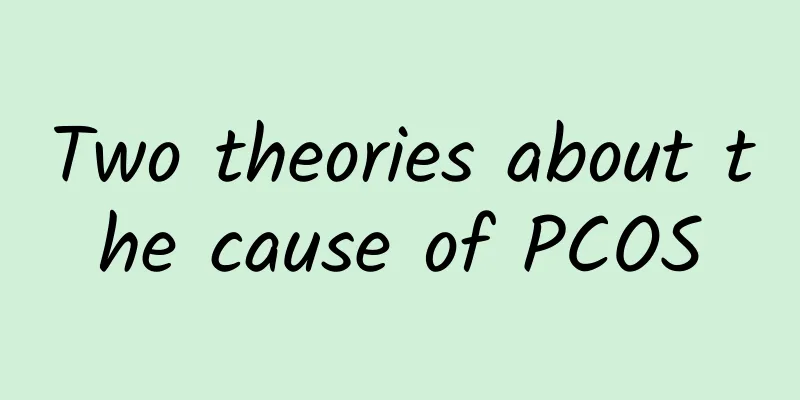Symptoms and causes of cervical erosion

|
Cervical erosion is a common physiological phenomenon on the surface of the cervix. It is not a disease and usually does not require excessive treatment. Its symptoms include increased vaginal discharge and contact bleeding, etc. The causes may be related to factors such as hormone levels and infection. Treatment methods include regular examinations, drug treatment or physical therapy. 1. Common symptoms of cervical erosion The main symptom of cervical erosion is an increase in vaginal discharge, which may be accompanied by an odor or abnormal color. Some women may experience contact bleeding after sexual intercourse, but the amount of bleeding is usually small. A few people may feel discomfort in the lower abdomen or back pain. These symptoms do not necessarily mean cervical erosion, but may also be related to other gynecological diseases, and a gynecological examination is required to confirm the diagnosis. 2. Causes of cervical erosion The occurrence of cervical erosion is related to many factors. Changes in hormone levels are one of the main reasons. In particular, increased estrogen levels may cause the cervical columnar epithelium to migrate outward, forming an erosion-like appearance. Chronic cervicitis, bacterial or viral infections such as HPV infection may also induce or aggravate cervical erosion. Mechanical stimulation such as multiple artificial abortions and childbirth injuries may also cause damage to the cervical surface and form erosion. 3. Treatment of cervical erosion The treatment of cervical erosion needs to be selected according to the specific situation. For patients with no obvious symptoms and no infection, it is usually recommended to conduct regular cervical cytology examinations such as TCT and HPV testing to observe changes in the condition. If accompanied by infection, antibiotics or antiviral drugs such as azithromycin and interferon can be used. For patients with obvious symptoms or large lesions, physical therapy such as laser, freezing or electrocautery can be considered. These methods can effectively remove diseased tissue and promote cervical repair. 4. Daily prevention and care The key to preventing cervical erosion is to maintain good living habits and hygiene habits. Avoid unclean sexual behavior, have regular gynecological examinations, and promptly detect and treat cervical inflammation. Eat more foods rich in vitamins C and E, such as citrus fruits and nuts, to enhance immunity. Avoid frequent use of vaginal douching fluids to avoid disrupting the balance of the vaginal environment. Cervical erosion is a common physiological phenomenon. In most cases, it does not require excessive treatment, but regular checks are required to rule out other potential problems. By understanding its symptoms and causes and taking appropriate treatment and preventive measures, cervical health can be effectively managed. If abnormal symptoms occur, you should seek medical attention in time, get a clear diagnosis and receive targeted treatment. |
<<: Should I remove my ovaries for an ectopic pregnancy?
>>: What are the symptoms of ectopic pregnancy?
Recommend
How much does it cost to treat congenital absence of vagina?
How much does it cost to treat congenital absence...
The most common early symptoms of ectopic pregnancy
Among many gynecological diseases, ectopic pregna...
Pelvic inflammatory disease may be caused by bad living habits
Pelvic inflammatory disease may be caused by bad ...
How to treat abnormal leucorrhea with vaginal itching
How to treat abnormal leucorrhea accompanied by v...
Treatment for vulvar itching
After vulvar itching occurs, female friends feel ...
What are the common causes of dysmenorrhea
Dysmenorrhea is a phenomenon that many women suff...
What is the reason for brown blood before menstruation?
If a small amount of brown blood appears between ...
Can I drink brown sugar water if I have adenomyosis?
Adenomyosis mostly occurs in women between the ag...
How long does it take for abdominal pain to start with ectopic pregnancy? Usually 6 to 8 weeks
Ectopic pregnancy usually causes abdominal pain a...
What is the best medicine for cervical erosion? 3 types of medication for cervical erosion
The treatment of cervical erosion requires the se...
Does ovarian cyst require surgery?
Ovarian cyst surgery needs to be considered compr...
What are the main causes of ectopic pregnancy?
What are the main causes of ectopic pregnancy? I ...
What are the symptoms of uterine effusion?
Uterine effusion is also a common disease in wome...
Introducing effective methods to prevent vaginitis in spring
Many people want to know the effective ways to pr...
STD invasion may directly cause adnexitis
The invasion of sexually transmitted diseases may...









